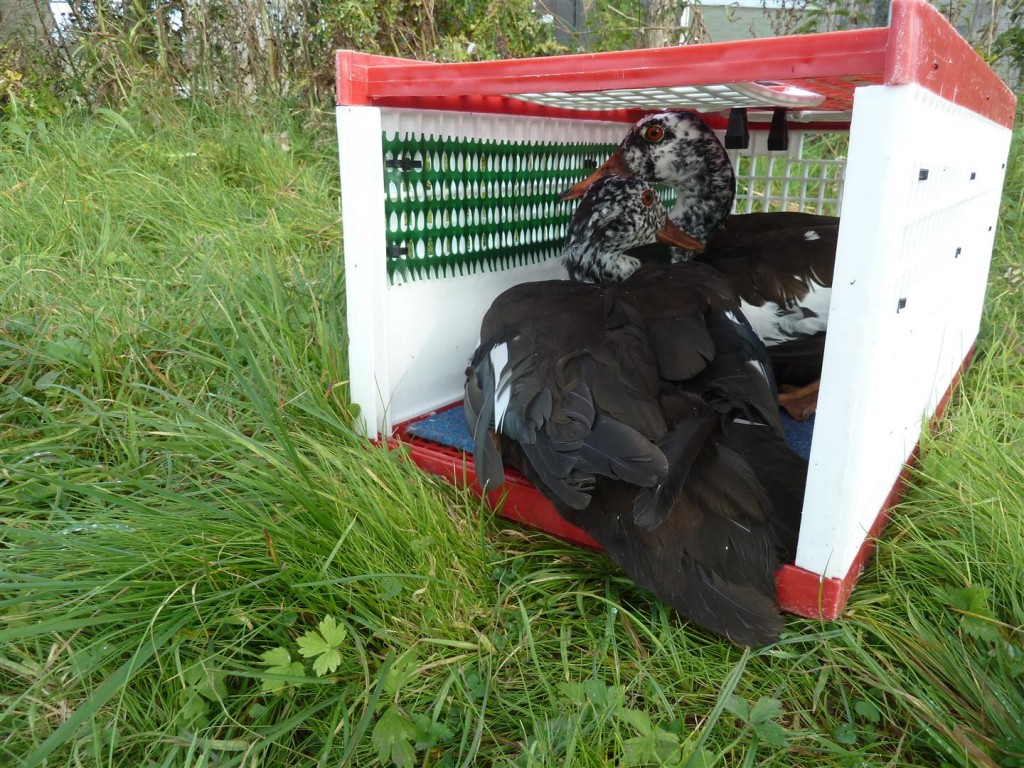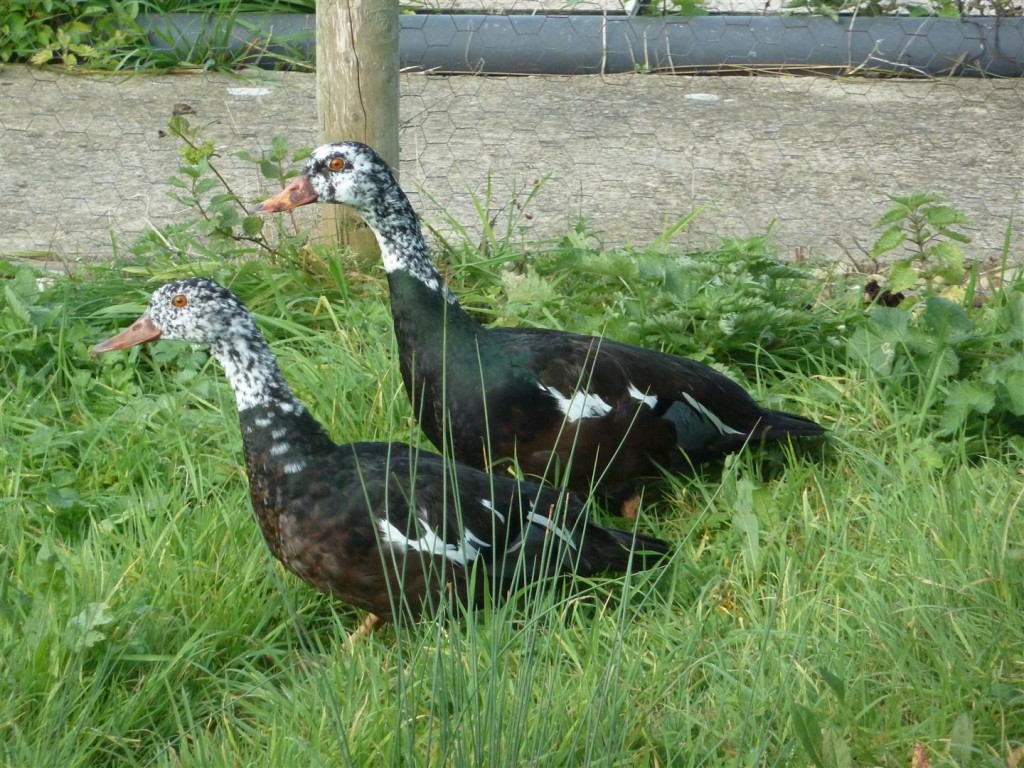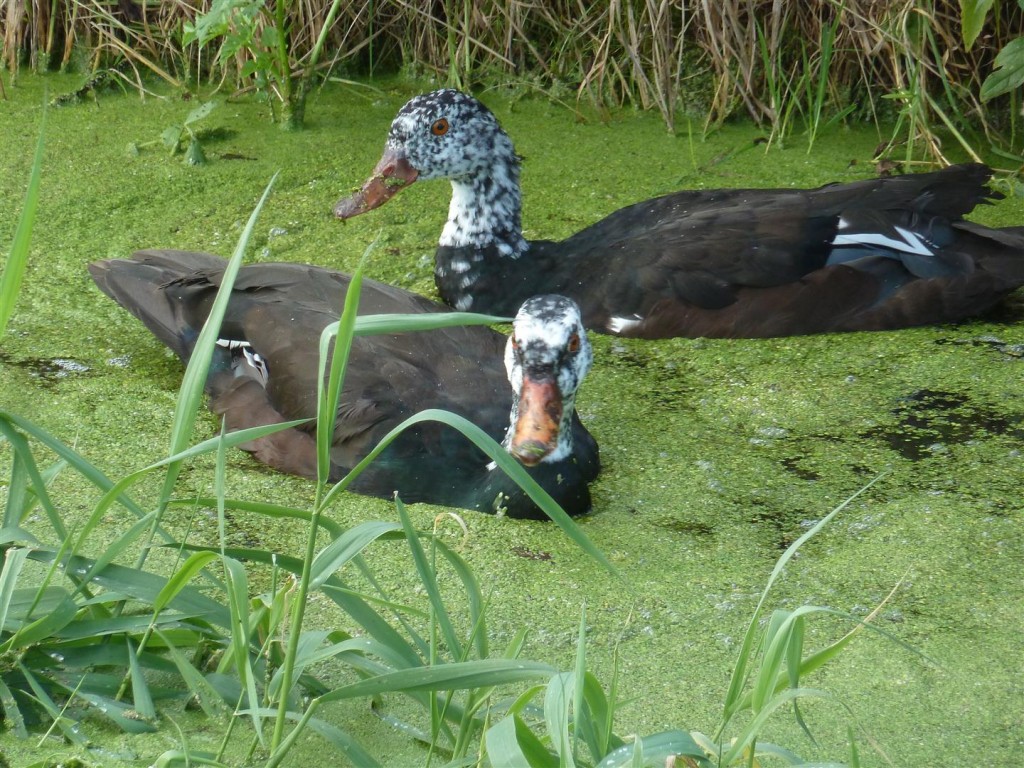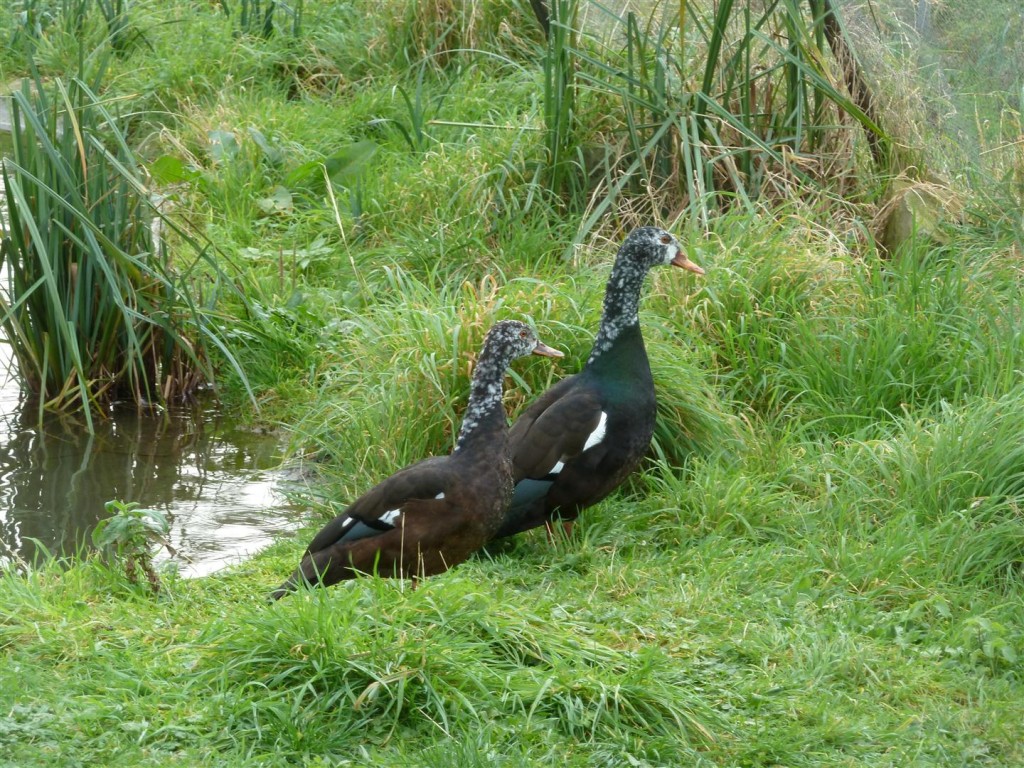White-winged duck breeding preparations.
For me, when it comes to white-winged wood duck, it is never too early to prepare for the breeding season...
Having bred from our historic Slimbridge stock for 4 whole seasons now, it is time to change our breeding pairs. We have made sure to receive eggs from as many of the old Slimbridge birds as possible so as to get maximum diversity before embarking down the family tree.
The pair below have been together for just over 1 year now and come spring will be approaching 2 years of age. The male is Slimbridge born and bred, but the female (smaller and to the front) has come from a private breeder with a bloodline currently located in Portugal. Whilst their ancestors may have been distantly related, this is the best we can do to diversify genetics, after all siblings take a different genetic combination from their parents every time, and hopefully separating strands of their family tree and breeding them in isolation from each other has cultivated 'difference.' This is true of many captive species since their enrollment into captive breeding, and official studbooks can help manage this.

You can see here that the pair have not quite finished their body moult in its entirety, with the female still sporting some dowdy faded brown feathers across her breast. The male is nearly there though, with his wonderful irridescent breast and bold eye shining through. To be fair to the two of them however, no bird looks spotless post-release and a spot of preening will sort them out in no time!

One of the reasons to release this pair so early is the opportunity to fatten them up in advance of the winter on the wide range of natural foodstuffs in this exhibit. The two of them have loved gorging on freshwater mussels and invertebrates, as well as enjoying the endless duckweed. This will set them up with excellent protein levels for breeding and egg laying in April. We are looking for the best fertility possible from these two.

A secondary reason to release them now is another crucial factor; competition. The pair below are their next door neighbours in the adjacent aviary, and they were most interested to check out the new locals! You can see that this male has also fully re-grown his feathers post-moult and as in absolute tip top condition. I love the photo below for several reasons but the two important ones are these...
1. Since the two pairs have seen 'eye to eye' for the first time, they simply have not stopped displaying. The air is strong with the sound of honking!
2. This photo shows for me one of the reasons why white-wings are so cool. They are looking dead straight-on at the new pair, unlike many wildfowl species which cock their heads and look sideways at you with one eye. This is because the shape of their skulls and the position of their eyes means that many ducks do not have forward vision. White-winged ducks have brilliant peripheral vision because in the wild they navigate between tree-trunks in flight and need to see in front of them. This makes their breeding display very attractive because they perform a lot of bowing and neck lengthening movements looking straight ahead.

I'm really looking forward to seeing how they progress! White-wings at Slimbridge are a bit of a tradition, and despite not having any on display at the moment (plans in progress) they really are a species for us to shout about. We were one of the first collections to receive and breed wild white-wings back in the late 60's early 70's.
We were also involved in their direct conservation for 30+ years. The species is estimated at fewer than 1000 wild individuals in fragmented and polluted lowland riverine habitat along the Indonesian islands from Vietnam to Malaysia. Whilst in-situ breeding efforts are now working well in-country, they are a species to which WWT's motto applies well; "Wetlands, for wildlife and people." Until their habitat equilibrium is controlled this species will never be numerous or secure. Thankfully they are also an example of a species that was caught before they were critically endangered, and so hopefully the genetic pool can be aided indefinitely in advance of potential habitat re-newal. Not all species are so lucky...

